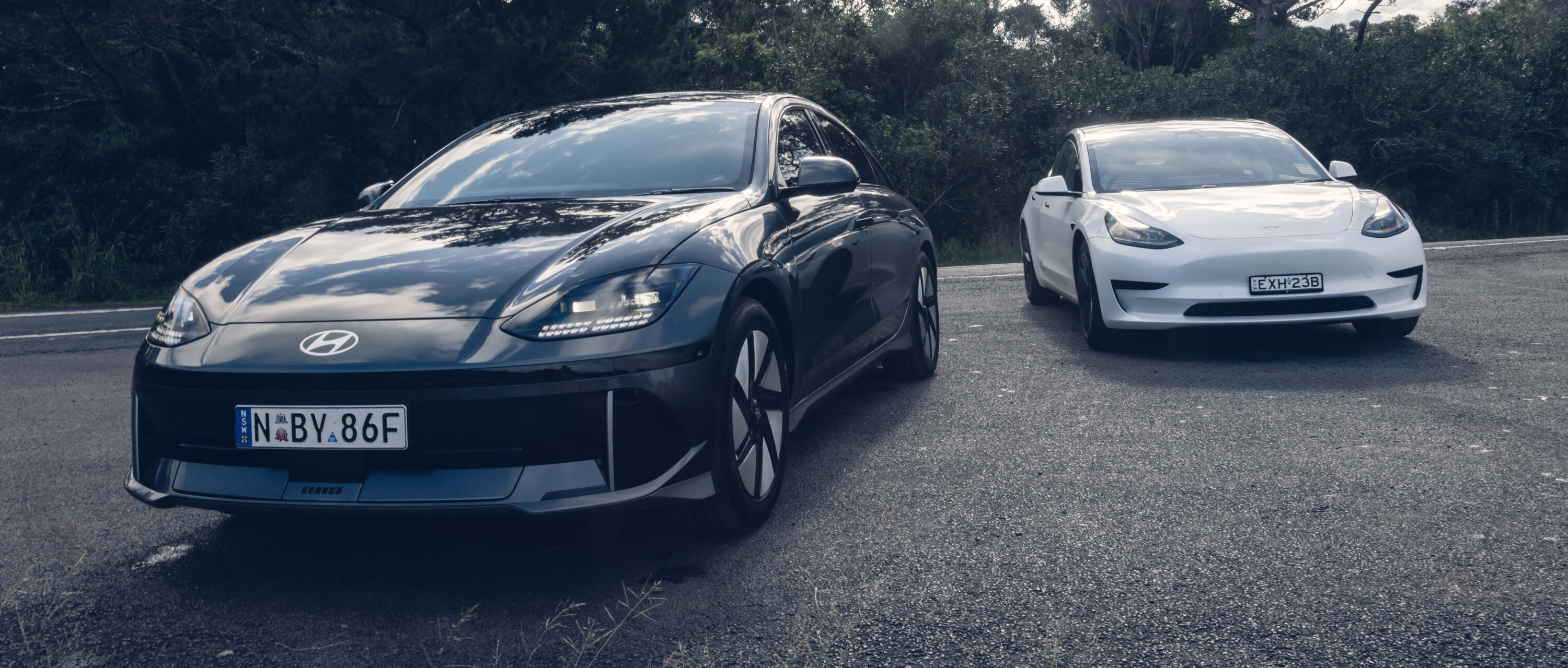
Things we like
- MODEL 3: Value proposition, pace, availability
- IONIQ 6: Cabin refinement & design, smooth ride
Not so much
- MODEL 3: Poor cabin insulation, no dedicated switches, fidgety ride
- IONIQ 6: Compromised back seat, price of entry, no wireless phone mirroring
It could be a battle of the titans…
When was the last time you saw a comparison between two sub-$100K sedans, one of which happens to be a top-ten seller in Australia?
Blur your eyes a little and you could almost trick yourself that this is an AU Ford Falcon v VX Holden Commodore battle.
The Tesla doesn’t do a great VX impression, sure, but the way the IONIQ 6’s body lines curve in an arch from front to back gives more than a whiff of AU Falcon.
Although SUVs and utes are flavour of the moment, Tesla’s disruptive Model 3 has stamped its foot. Not only is it a top seller (this doesn’t always equate to greatness), but it also became our EV benchmark by taking top honours in our electric car Megatest in December (Wheels Yearbook 2022).
Fast forward a few months to March 2023 and editor Enright’s first encounter with Hyundai’s new IONIQ 6 – an ‘electrified streamliner’ as the brand calls it – and the Tesla’s supremacy was thrown into question. Andy came away from the IONIQ 6’s launch program suitably impressed.
December 2023: Updated Model 3 driven
Story continues…
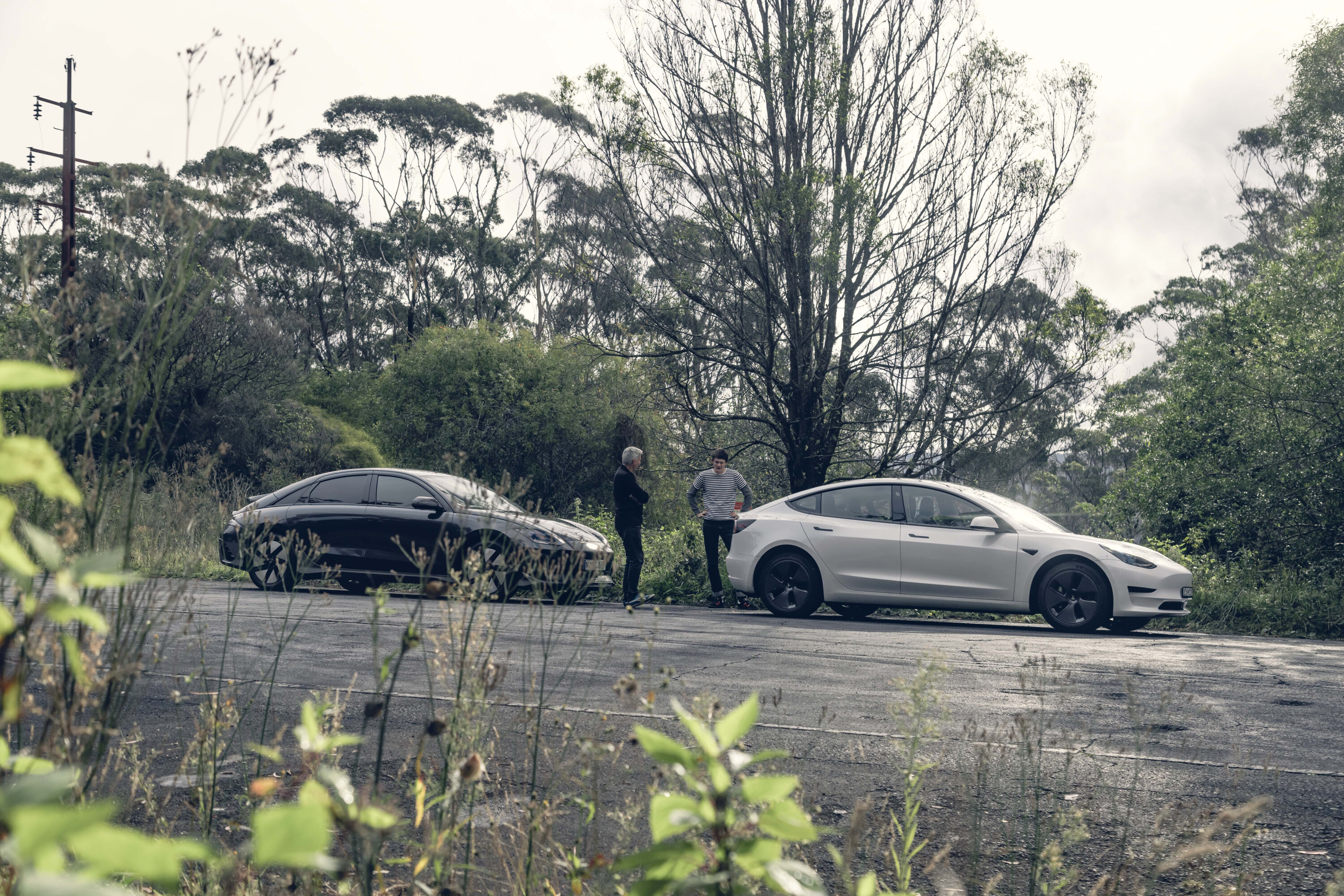
“If you want the better car, right now it comes from Korea,” was Enright’s initial verdict on Hyundai’s electric sedan.
That’s why we’ve lined up the most affordable version of each for a twin test on familiar bitumen to directly compare and contrast the pair.
In its cheapest form, the $74,000 (before on-road costs) IONIQ 6 is currently $12,700 dearer than our base Model 3. The extra ask brings a generous 77.4kWh NMC battery pack and 614km range (WLTP). Courtesy of Hyundai/Kia’s 800-volt E-GMP platform, you also get faster charging with 10-80 per cent taking just 18 minutes on a 350kW public charger.
Played against the Model 3 – which takes around 25 minutes for the same interval – the IONIQ 6 is handily quicker at getting you back on the road, more than offsetting its slower 0-100km/h sprint (6.1 seconds plays 7.4 seconds). As for power, Tesla doesn’t advertise figures, but estimates put it 50kW up on the IONIQ 6’s 168kW figure, and 70Nm on the Hyundai’s 350Nm.

We observed lower peak charge speeds than both Tesla (170kW) and Hyundai (230kW+) advertise due to what we believe was a faulty charger, but the IONIQ 6’s consistent 150kW was still double the Model 3’s 80kW rate.
The Model 3 RWD standard range on test – that we graciously thank a reader for lending us after Tesla was unable to supply one within our comparison timeframe – has an advertised 491km WLTP range from its smaller 57.5kWh LFP battery. Tesla’s Supercharger network remains a drawcard for Model 3 ownership, too, even though it’s gradually opening up to other brands.
Due to different battery chemistry in MY23 base Teslas, you can charge the Model 3 up to 100 per cent regularly (taking six hours and 15 minutes on an 11kW wallbox), whereas the IONIQ 6 is best topped up to 80 per cent. Coincidentally, 80 per cent of the Hyundai’s range is identical to the Model 3’s 491km WLTP rating.
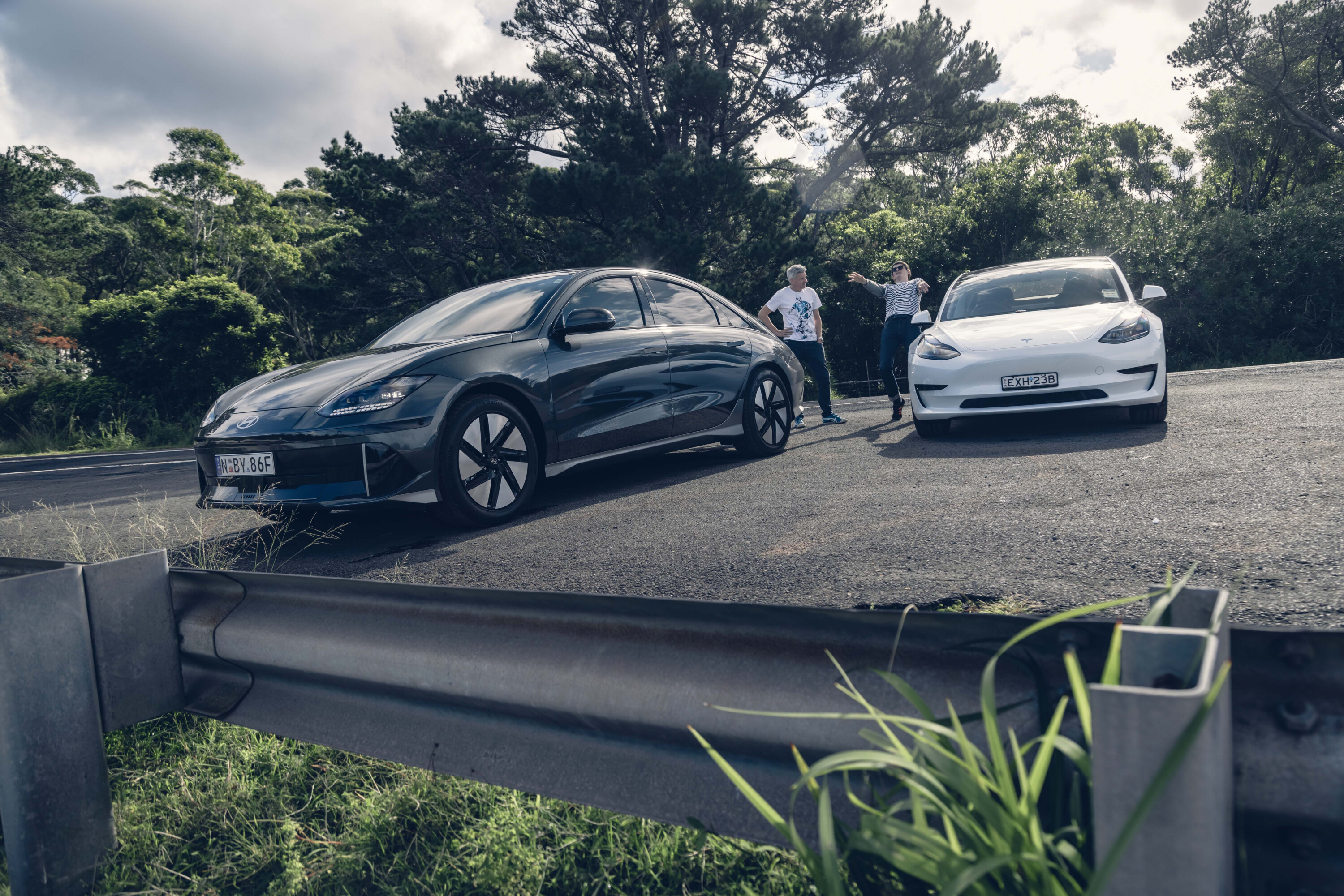
Compared to their SUV relations, the sedans’ aero advantages are laid bare in WLTP figures.
In Tesla’s case, the Model 3 will travel 36km more than a Model Y RWD, while the IONIQ 6 blows its 5 cousin out of the water with 113km of extra roving range from the same 77.4kWh battery.
In testing, both cars came close to matching their claimed numbers. The IONIQ 6 returned 14.5kWh/100km over 221km of driving, and the Model 3 13.6kWh/100km. This gives real-world ranges of 530km and 426km respectively – both about 13.5 per cent shy of WLTP.
Loaded with a 14.6-inch touchscreen that lets you download video games, watch Netflix, and make the indicators trigger synthesised fart sounds (childish as it may sound, it’s quite hilarious) the Tesla is a veritable tech fiesta. If you’re the kind of person who indulges in the latest, greatest smartphone the Model 3 will be a comfortable companion – and at a whisker under $60K after government incentives, it’s a real bargain.
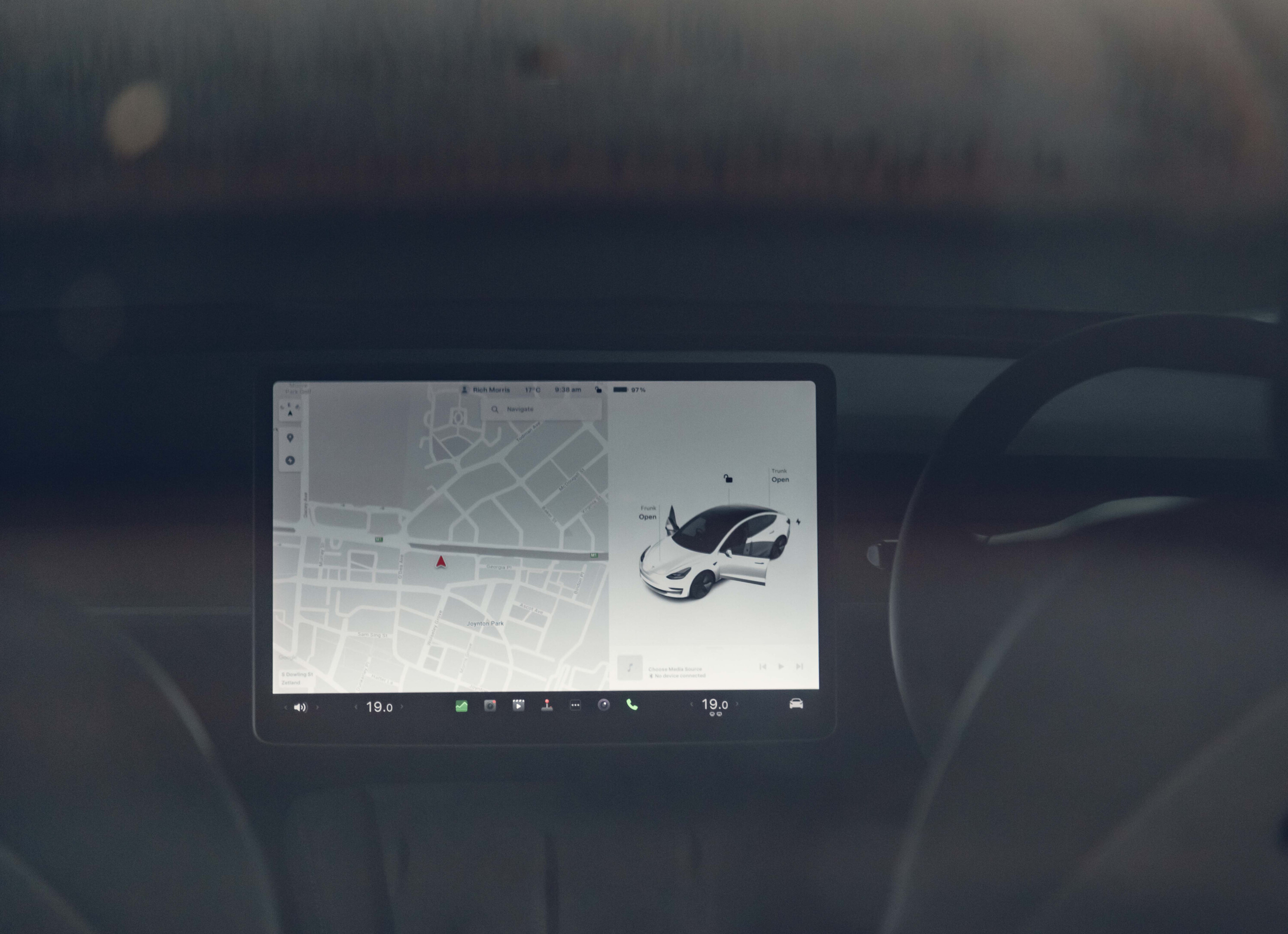
Tesla’s purchasing experience is significantly more digital, too
Excess digitalisation comes at an ergonomic cost, though. Even with the Model 3’s generous touchscreen, the targets are smaller than on an iPhone and therefore tricky to hit while driving.
As road testers swapping between cars, the Tesla’s mirror and steering wheel adjustments being buried in the menu is frustrating, but we understand that for an owner with set profiles (and they’re very customisable) it’s unlikely to be such a hassle. An easy-to-read head-up display would be nice, though.
Tesla’s purchasing experience is significantly more digital, too. You can visit minimalist experience centres if you need and organise test drives from Tesla hubs, though the Model 3 purchase can be made entirely online and, as Jez pointed out, pricing is laid out in simple-to-understand monthly repayments rather than a single cash sum.
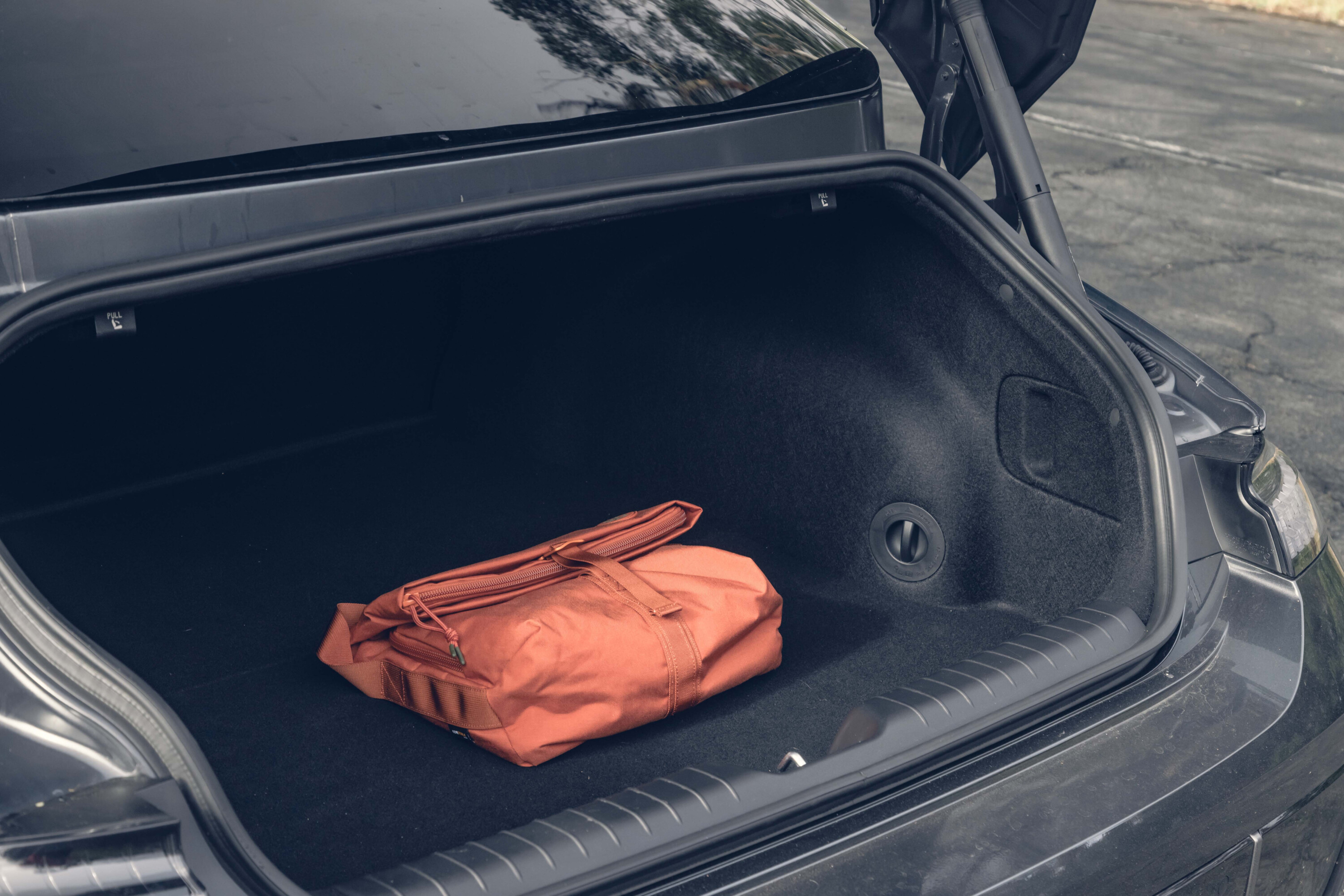
Buying a Hyundai IONIQ 6 is a more familiar affair.
Though online transactions are possible, Hyundai still has plentiful brick-and-mortar dealerships to view the car in person and engage with a familiar salesperson, with trade-ins possible.
Where the Tesla’s cabin is minimal (almost to a fault), the IONIQ 6 is a more hands-on design. The interior is mature and well-appointed, sculpted carefully with backlit door cards diffusing the changeable ambient lighting, tactile materials and an appearance that calls back to the optimistic 1950s.
A pair of 12.3-inch screens are integrated almost seamlessly ahead of the driver. One is the digital driving display that features vehicle information (an easily-seen speedometer, for example) while the central touchscreen houses the responsive but familiar infotainment system with live-traffic navigation.
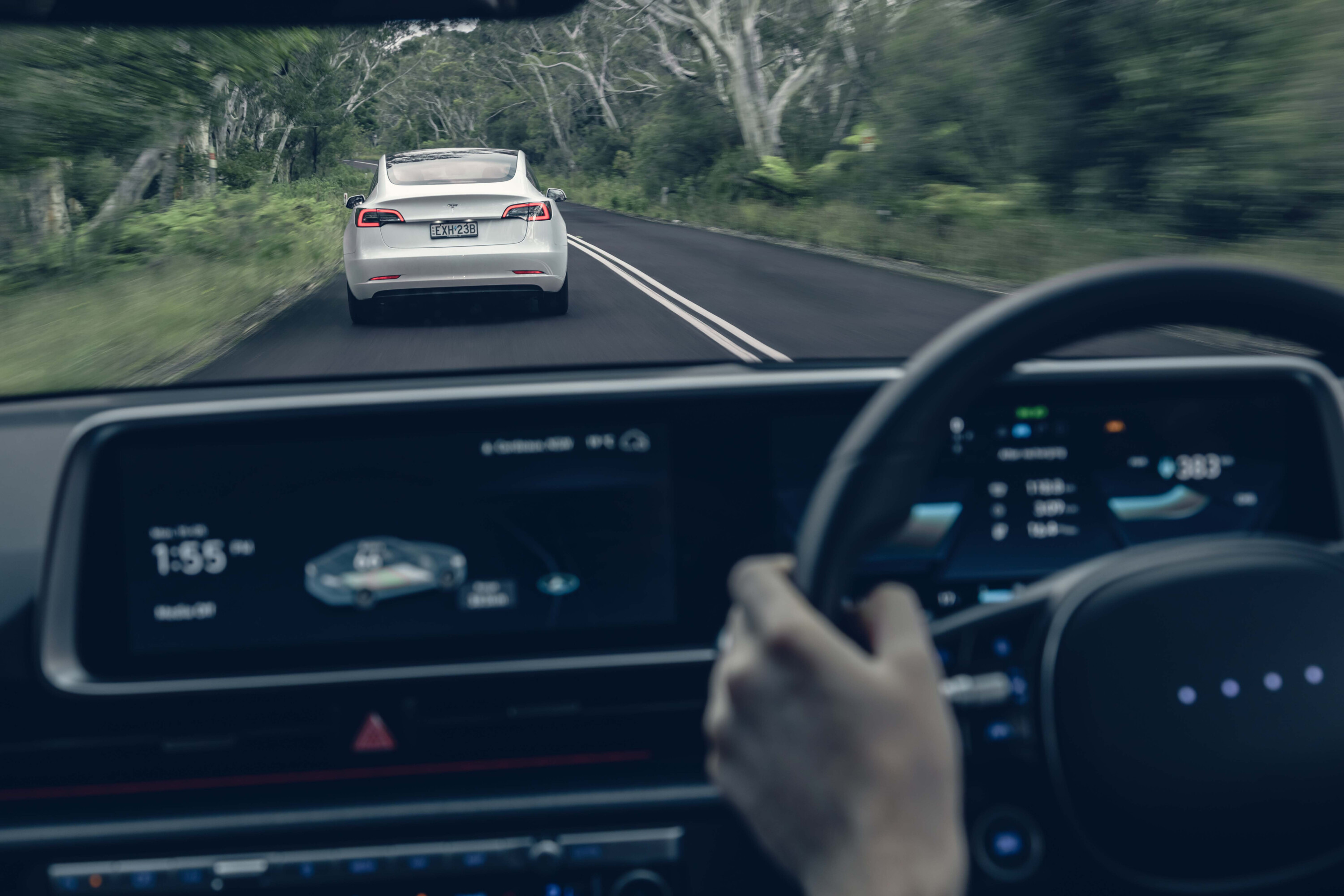
There’s a clear head-up display, too. An eight-speaker Bose sound system is standard, though it doesn’t match the Tesla’s excellent hi-fi for power and clarity.
Hyundai still doesn’t offer wireless Apple CarPlay or Android Auto for its larger infotainment screens and it feels old hat connecting your phone via the USB-A port. However, the clever storage spaces include an open centre console, a smart wireless charging pad that retains phones assuredly, and a deep storage cubby beneath a well-added armrest. The Model 3’s twin wireless charging pad is still the best in the business, but overall the IONIQ 6 edges ahead in cabin practicality.
The aerodynamic and weight advantages of these three-box sedans next to their SUV relations are profound enough to have us thinking EVs could usher in a sedan revival… until entering the back seat.
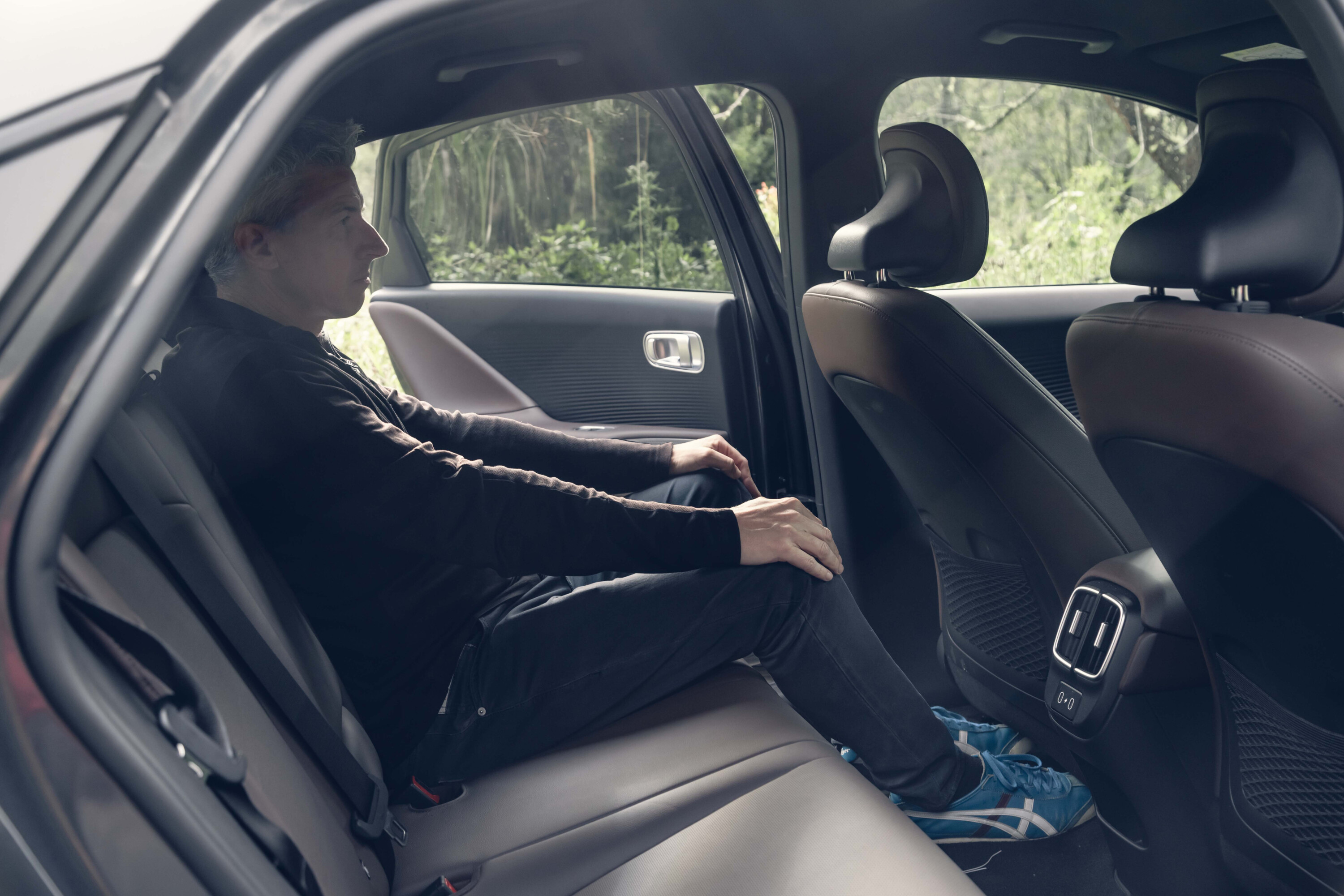
Unfortunately, as comfortable as both cars’ front driving positions are (they each get 10-way electric leather-appointed seats with three-stage heating and memory functions), the rear seats are compromised next to spacious internal combustion engine equivalents like the Hyundai Sonata and Toyota Camry.
With so many battery cells below deck, the floors remain high in both. The IONIQ 6’s 161mm extra length and 75mm longer wheelbase free up plenty of legroom, but there’s little space beneath the seat for toes, and taller riders will find their knees hovering above the cushion. Headroom is also compromised for those over 180cm in height.
The Model 3 suffers from a similarly high floor, though it does have a touch more under-thigh support. Headroom is tighter, so at 188cm I was less comfortable in the Tesla, though Jez’s 182cm frame was better accommodated in the Model 3. Rear air vents, USB-C charge points, bottle holders and fold-down armrests are standard in the pair.
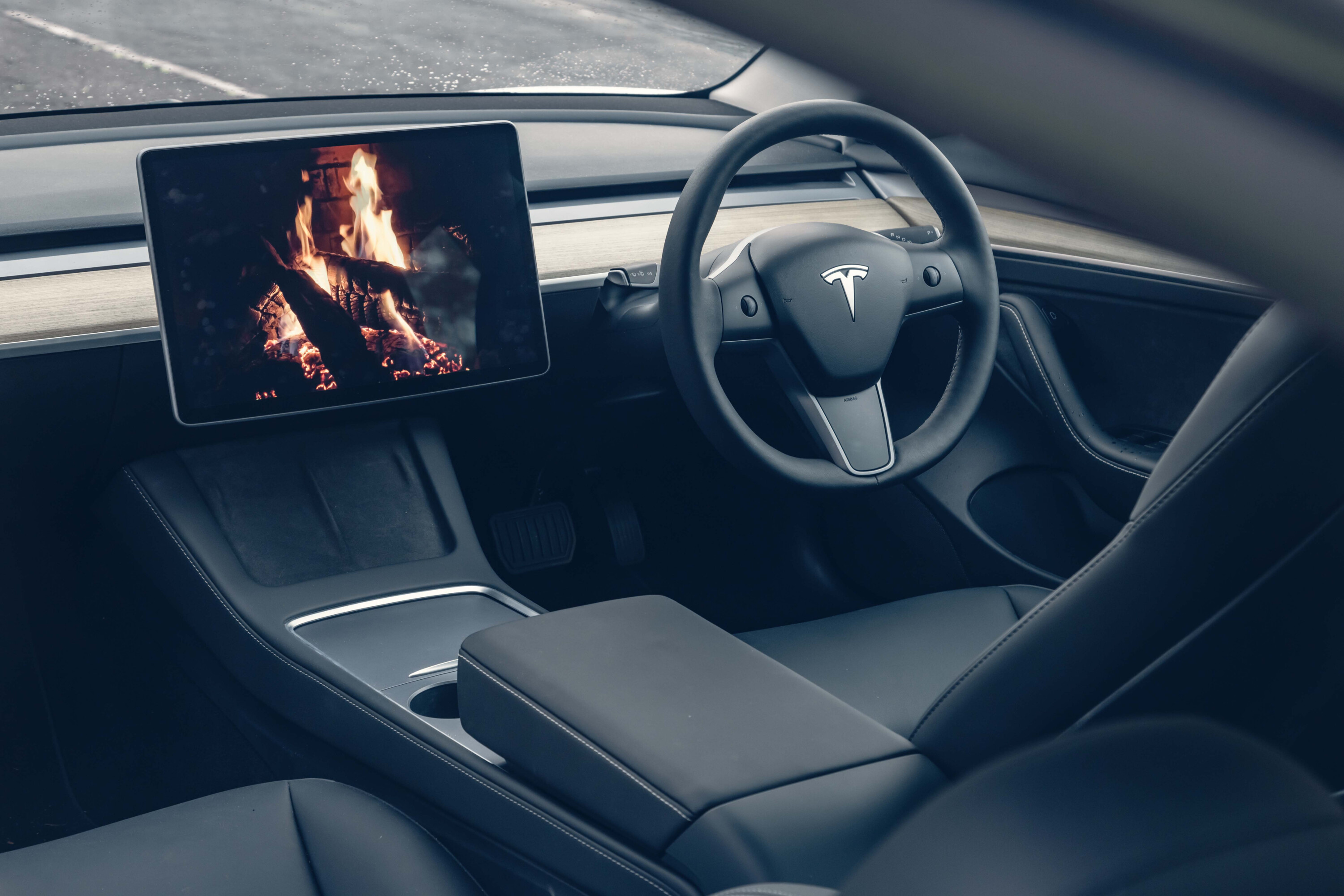
Despite the IONIQ 6’s size advantage, the Hyundai’s cargo capacity is smaller, with 445L when combining the 400L boot and 45L ‘frunk’, which is really only sufficient for charging cables.
A three-pin socket is found in the IONIQ 6’s rear seats for vehicle-to-load functions; something the Tesla doesn’t have.
There are two pull tabs to drop the rear backrest, but the IONIQ 6’s rear bulkhead encroaches into the space, meaning it’s tough to put a bicycle inside.
Model 3 boot space is a more generous 649L and there’s a capacious cavity beneath the boot floor. Neither car has practicalities like shopping bag hooks or nets or even a spare tyre – it’s mobility kits and roadside assist for these two.
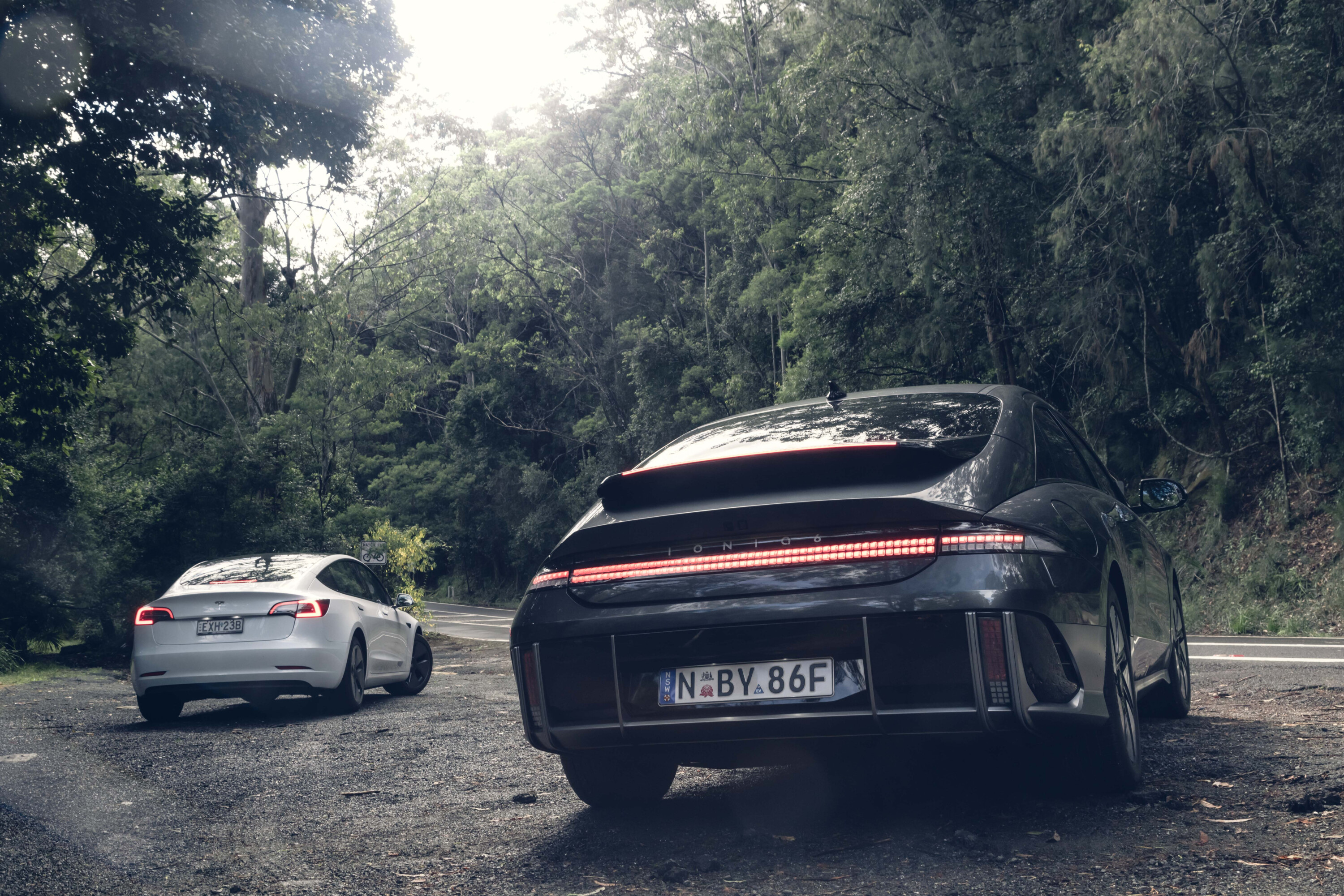
Thus far, the Model 3 and IONIQ 6 offer very different experiences
One is clean, crisp, and takes getting used to, and the other is a more mature take on cabin design with better build quality, materials, and a wholly less digital experience.
The IONIQ 6 is more car-like, and the Model 3 is like a phone – and one with more than a whiff of in-built obsolescence.
One thing is clear: the easy power of electric vehicles is quickly superseding ICE vehicles. In 2011, a BMW 335i would get you a similar 225kW to the Tesla, though it cost $91,900, or about $118K in today’s money. The Tesla costs half that; it’s safer and better equipped with barely any drop in straight-line performance.
Of course, the Model 3’s single electric motor delivers its kilowatts in a more anodyne fashion. Gun it and go; no waiting for kickdown or boost to build.
The way even this base Model 3 can snap your neck back against the headrest is pretty stunning. Even in the damp, the Tesla’s pre-emptive traction control limits wheelspin for effortless acceleration. It’s also not that heavy (for an EV), tipping the scales at 1752kg – 216kg less than the IONIQ 6.
With only one choice for regenerative braking – stronger than even the IONIQ 6 in its strongest-of-four ‘i-Pedal’ setting – the Tesla’s pedal calibration immediately feels natural.
The Hyundai’s power delivery is more conservative, too; the IONIQ 6 takes a moment to build maximum thrust. It’s still brisk, sure, but it can’t keep up with the Tesla. In roll-on acceleration, the IONIQ 6 was 7km/h slower than the Tesla. And, for $700 less than the IONIQ 6, you can get an even more powerful twin-motor Model 3 that’ll hit 100km/h in 4.4 seconds.
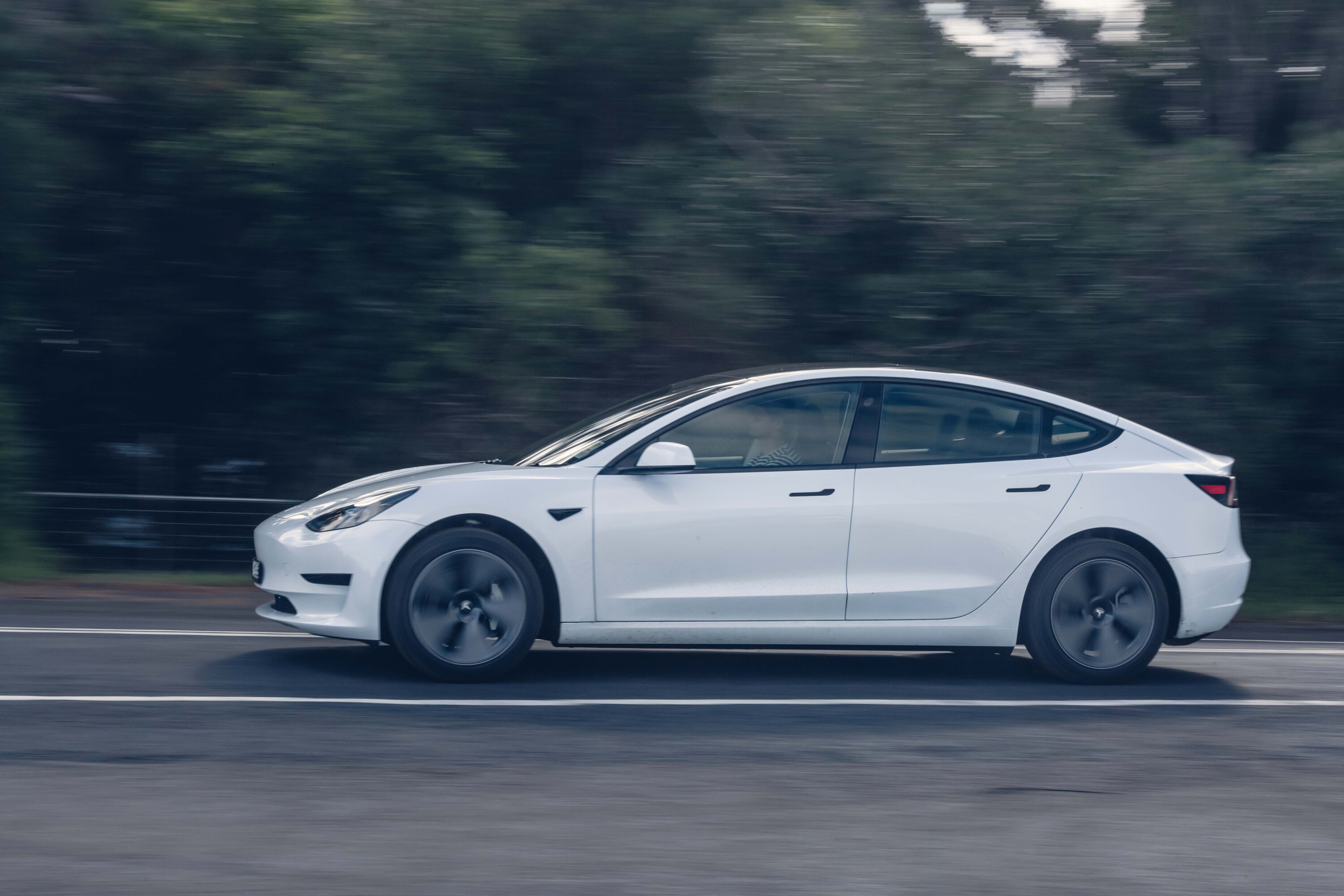
Where does that leave the IONIQ 6’s strengths? In refinement, ride comfort, build quality, and all the things that traditional manufacturers strive for.
The Model 3’s ride is not wholly unpleasant in isolation (and is much better than the tiresome Model Y), absorbing big potholes well. But it’s the everyday granular imperfections, small hits and expansion joints that make the Model 3’s body fidget.
It’s loud inside the Model 3, too. Partially a symptom of grippy 245/45R18 Michelin Pilot Sport 4 tyres, there’s plenty of cabin roar (which you naturally notice more due to the lack of engine noise) and low-frequency resonances on surfaces where the IONIQ 6 remains quiet.
There are also occasional thumps from the Model 3’s front and rear suspension, and ours had rattles from B-pillar trim pieces and a creak from the driver’s seat.
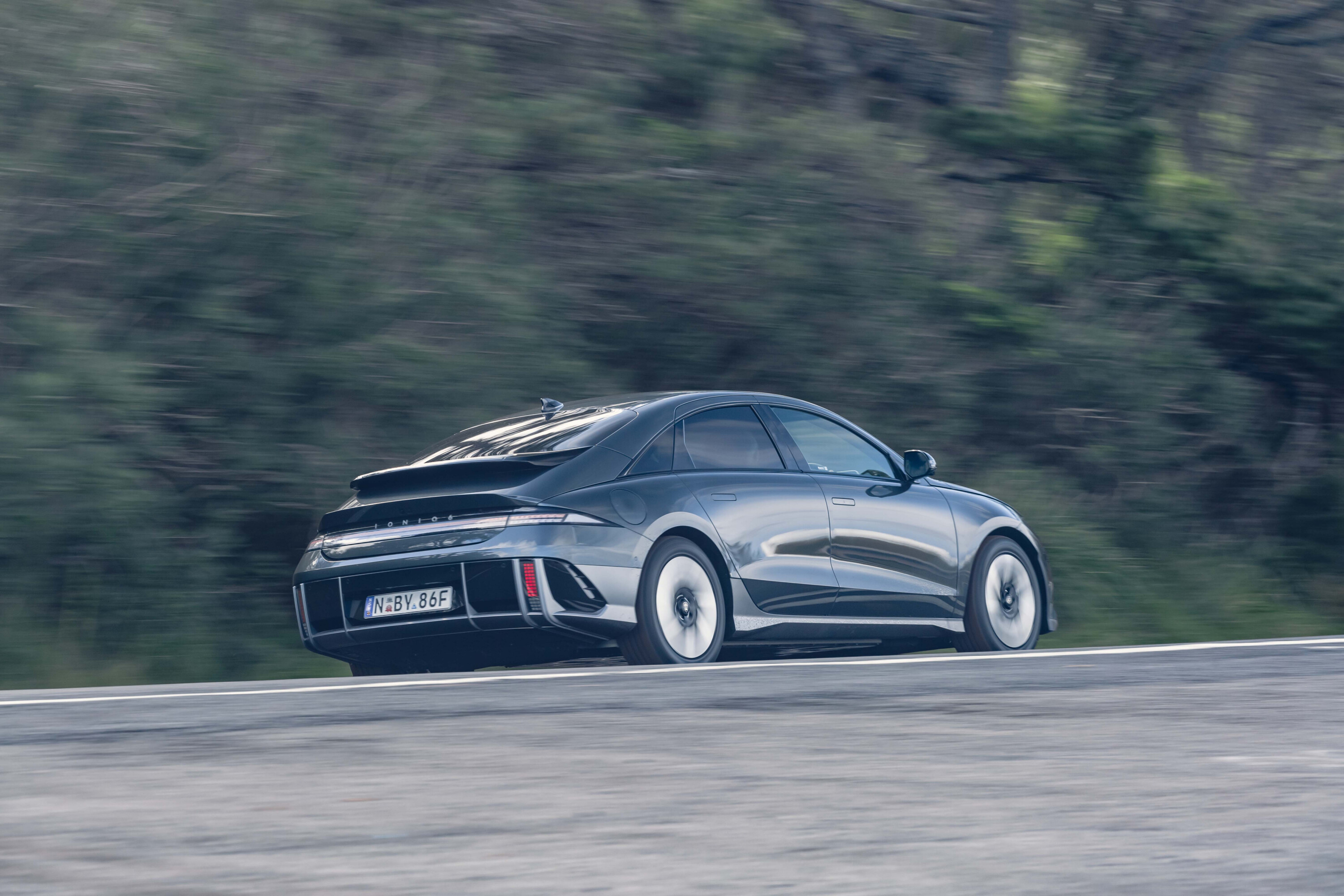
With its frequency selective dampers, the Hyundai IONIQ 6 remains compliant and relaxed over common imperfections, with its soft 225/55R18 Hankook Eco tyres contributing to a chassis that’s largely undisturbed by bumps. Bigger hits are met with firmer damping, but this is actually positive as it stops the IONIQ’s body from falling into dips, easing car-sickness-inducing head toss that is a common complaint in the IONIQ 5 SUV.
Those chasing roadholding and sharp handling, though, will enjoy the Tesla’s crisp two-turn steering rack. It may be ultra-fast, but it isn’t too hyperactive off-centre. The Hyundai’s is less confidence-inspiring and slower (2.75 turns lock-to-lock), though it does wake up in Sport mode with added heft.
It’s likely that the Hyundai’s eco tyres liberate 2-5 per cent extra range, but it comes at the cost of grip – especially in damp conditions. Where the Tesla’s Michelin’s bite into the bitumen, the IONIQ 6’s rubber has a less commanding relationship with the tarmac and a tendency to slip with little warning.
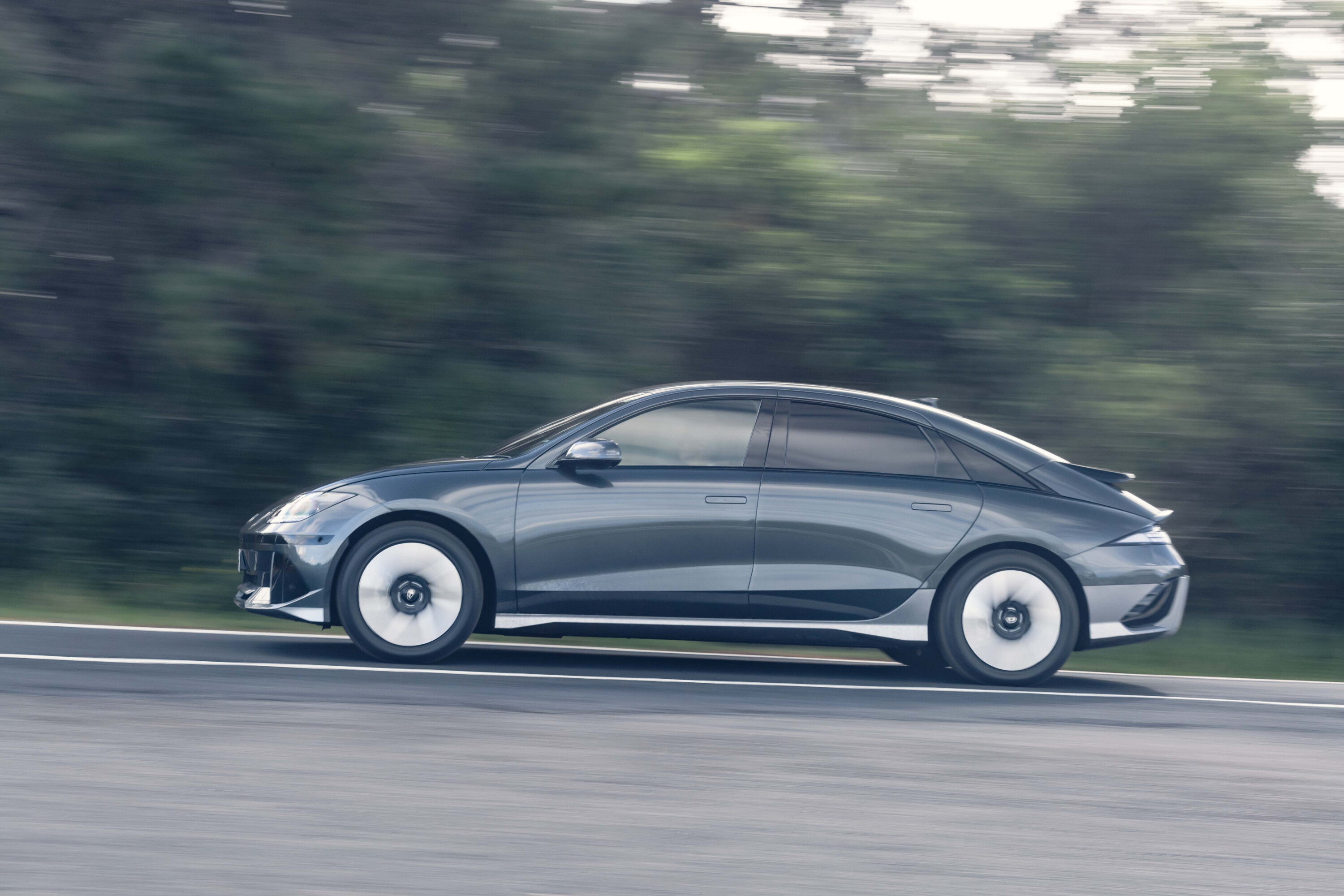
Both cars have a rear-drive balance, but with the lower centre of gravity afforded by EVs, their roll characteristics are very different from the typical soft and relaxed body movements associated with ICE sedans of the past. Although less sporty to drive, the IONIQ 6 – with its three switchable drive modes – is more soothing to pilot and passenger in.
Providing, that is, you’ve disabled the speed limit assist. Although helpful in theory (it beeps when you exceed the limit), it isn’t effective here. In time-sensitive zones, such as roadworks or school zones, the IONIQ 6 can’t recognise the hourly constraints. It’ll say it’s a 40km/h limit even at 6am on a Sunday. The system turns on every time you start and takes at least four taps on the touchscreen to disable.
Speed limit aside, the IONIQ 6’s adaptive cruise control, lane-trace assist, blind-spot monitoring with cameras, rear cross-traffic alert, and AEB with pedestrian, cyclist, junction, and reverse functions match the Model 3’s impressive suite. Both electric sedans carry five-star ANCAP safety ratings.
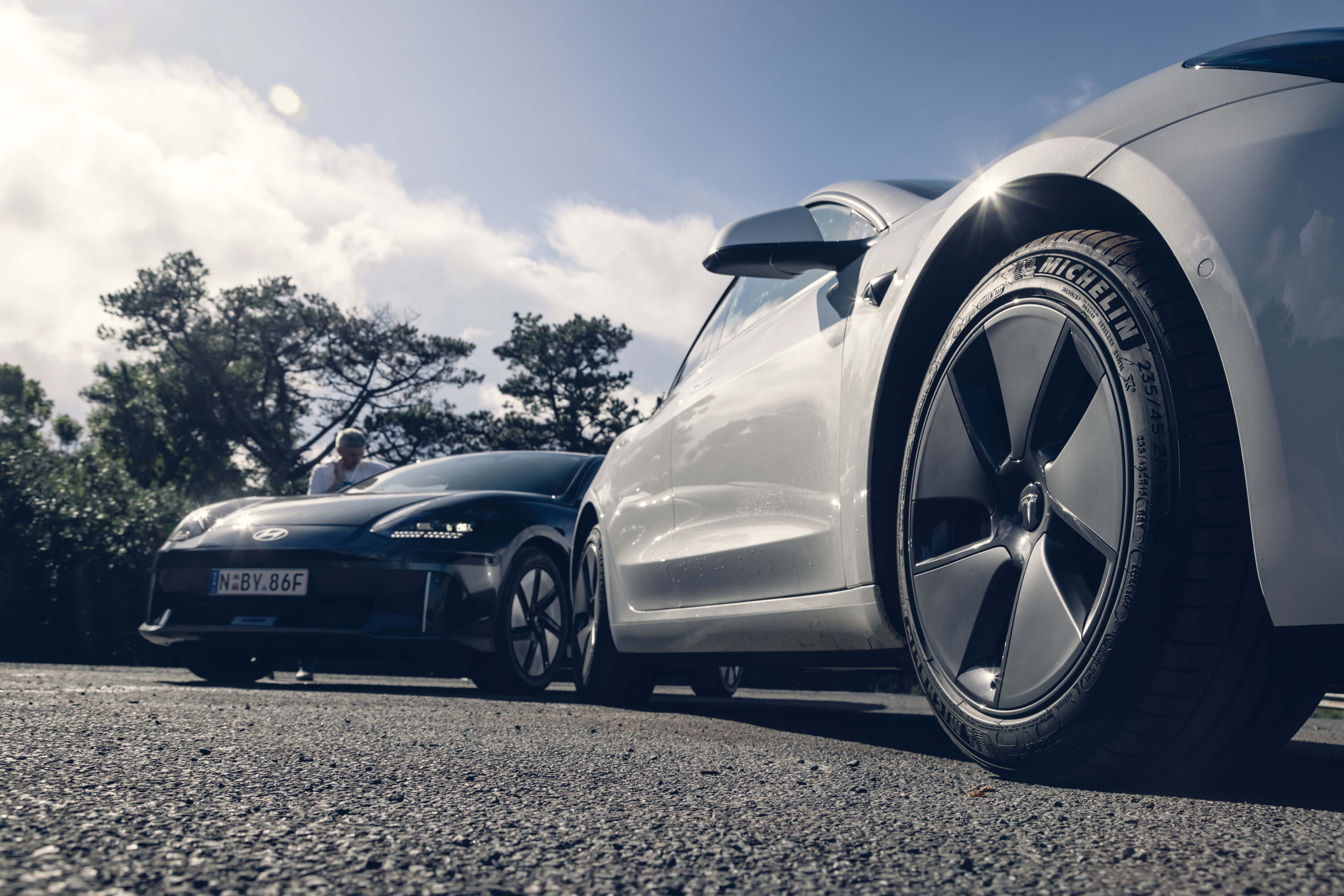
In all likelihood, you’re reading this comparison with a clear favourite in mind
Even though the IONIQ 6 is very well equipped, when it comes to the latest and greatest technology, the Model 3 is unbeaten. Tesla really has moved the game on for sheer screen dominance at this price point.
Those sympathetic to Elon’s regular rants will undoubtedly find Tesla’s disruption and ensuing industry revolution attractive. It stands for more than the sum of its parts, but as a vehicle in the traditional sense, the Model 3 misses key targets.
There are still build quality issues as we experienced in this customer car’s rattly B-pillar and creaky seat. Likewise, some money invested in tuning out unpleasant cabin resonance and fitting higher-quality dampers would surely see the Model 3 surpass the IONIQ 6 at this price. If the Tesla were to climb by $10K for the base variant? That’s a less sure equation.
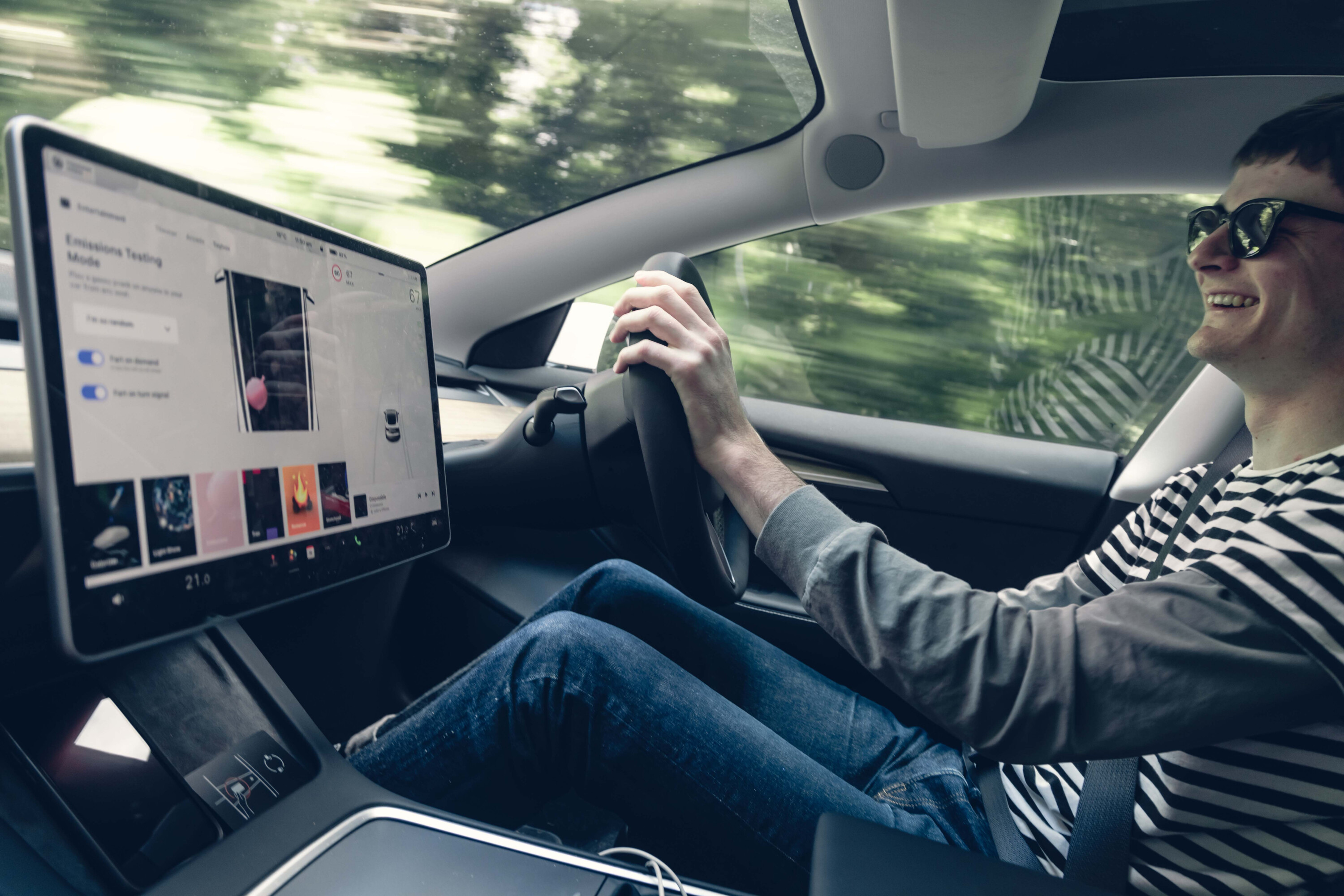
VERDICT
If you want an electric car now that performs bloody well for a whisker over $60K (and under once some state government incentives are loaded on), the Model 3 is the winner.
If you don’t have a TikTok account or care about keeping up with Tesla-owning colleagues, the IONIQ 6 is a tantalising package.
The real clincher – one that Andy touched on in his launch review – is that the IONIQ 6’s out-there design will divide opinion. Plenty of people we ran into were unconvinced and there were thoughts that, even though the IONIQ 5 was a little less refined to drive (and lost out for range), the SUV is the one most want to own due to its more resolved design.
All said and done, Hyundai has made a quieter, smoother, more refined, better built, and still immensely efficient electric car with the IONIQ 6. Its maturity both in the cabin and behind the wheel is beyond what the Model 3 offers.

Whining about ChargeFox
We based our charging out of an inner-city ultra-rapid location. It’s supposed to deliver up to 350kW DC rates. Our best number? 200kW for a mere second, before dropping to a disappointingly consistent 150kW. The Tesla only managed to crack 100kW for a brief moment. Only one of the two stations was functional, too, and it’s been this way for nearly six months. As more EVs find homes (it’s about 6000/month, concentrated around inner-city suburbs) infrastructure drain will get worse before it gets better.
*Tesla does not supply power of battery size data, these are reliable estimates from EV Database [↗]
Driving range and charging table
| Driving rangeu00a0 | Tesla Model 3 SR RWDu00a0 | Hyundai IONIQ 6 Dynamiq RWD |
|---|---|---|
| Battery size (usable) | 57.5kWh* | 77.4kWh |
| WLTP range | 491km | 614km |
| Tested consumption | 13.4kWh/100km | 14.5kWh/100km |
| Tested range | 426km | 530km |
| Varianceu00a0 | -13.6% | -13.7% |
SCORING
Tesla Model 3: 8.5/10
Things we like
- Value proposition
- Straight-line pace
- Consistent availability
Not so much
- Poor cabin insulation
- No dedicated instrument panel
- Fidgety ride quality
Hyundai IONIQ 6: 8.5/10
Things we like
- Cabin refinement
- Interior design
- Smooth, absorbent ride
Not so much
- Price of entry
- Compromised back seat
- No wireless phone mirroring
Scoring breakdown
| Tesla Model 3 SR RWD | Hyundai IONIQ 6 Dynamiq RWD | |
|---|---|---|
| Safety, value and features | 9 | 8.5 |
| Comfort and space | 8 | 8.5 |
| Engine and gearbox | 9 | 8 |
| Ride and handling | 7.5 | 8.5 |
| Technology | 9.5 | 8.5 |
| Overall | 8.5 | 8.5 |
More EV stories to help you choose the best car for your needs
- ? EV news, reviews, advice & guides
- ❓ Short & sweet: Your EV questions answered
- ⚡ New EVs: Everything coming to Australia
- ? Australia’s EVs with the longest driving range
- ⚖️ Best-value EVs by driving range
- ? How much do EVs cost in Australia?
- ? How much more expensive are EVs?
- ⚖️ Number crunching: Is it time to switch to an EV?
- ♻ Should you buy a used EV?
- ?️ Are EVs more expensive to insure?
- ? Costs compared: Charging an EV vs fueling a car
- ? EV charging guide
- ?? EV servicing explained
- ? EV battery types explained
- ? When do EV batteries need replacing?
- ? Hydrogen v EVs: What’s best for Oz?
MORE advice stories to help you with buying and owning a car
Specifications
| Tesla Model 3 SR RWD | Hyundai IONIQ 6 Dynamiq RWD | |
|---|---|---|
| Price | $61,300** + on-road costs | $74,000 + on-road costs |
| Drivetrain | ||
| Layout | single-motor RWD | single-motor RWD |
| System power | 220kW* | 168kW |
| System torque | 420Nm** | 350Nm |
| Gearbox | single-speed reduction gear | single-speed reduction gear |
| Chassis | ||
| Body | 4-door, 5-seat medium sedan | 4-door, 5-seat medium sedan |
| L/W/H | 4694/1849/1443mm | 4855/1880/1495mm |
| WB | 2875mm | 2950mm |
| Track (F/R) | 1580mm | 1635/1644mm |
| Weight | 1752kg | 1968kg |
| Boot | 649L | 401L + 45L |
| Battery | 57.5kWh* | 77.4kWh |
| Driving range | 491km (WLTP) | 614km (WLTP) |
| Charging (AC/0-100%) | 11kW/6h 15m | 10.5kW/7h 20m |
| Charging (DC/10-80%) | 170kW/25m | 220kW (approx)/18m |
| Suspension | Front: double wishbones, coil springs (f) / multi-links, coil springs (r) | Front: Macpherson strut / multi-link with frequency-selectice dampers |
| Steering | electric rack-and-pinion (2.0 L-L) | electric rack-and-pinion (2.75 L-L) |
| Front brakes | 4 piston front caliper, 320mm ventilated discs rotors | 325mm ventilated rotors |
| Rear brakes | Single-piston sliding caliper, 335mm ventilated rotor | 325mm solid rotors |
| Tyres | Michelin Pilot Sport 4 | Hankook Eco |
| Tyre size | 235/45R18 | 225/44R18 |
| Safety | ||
| ANCAP rating | five stars | five stars |
| Performance | ||
| 0-100km/h | 6.1sec (claimed) | 7.4sec (claimed) |
| *figures based on estimates provided by EV database | ||
Things we like
- MODEL 3: Value proposition, pace, availability
- IONIQ 6: Cabin refinement & design, smooth ride
Not so much
- MODEL 3: Poor cabin insulation, no dedicated switches, fidgety ride
- IONIQ 6: Compromised back seat, price of entry, no wireless phone mirroring
We recommend
-
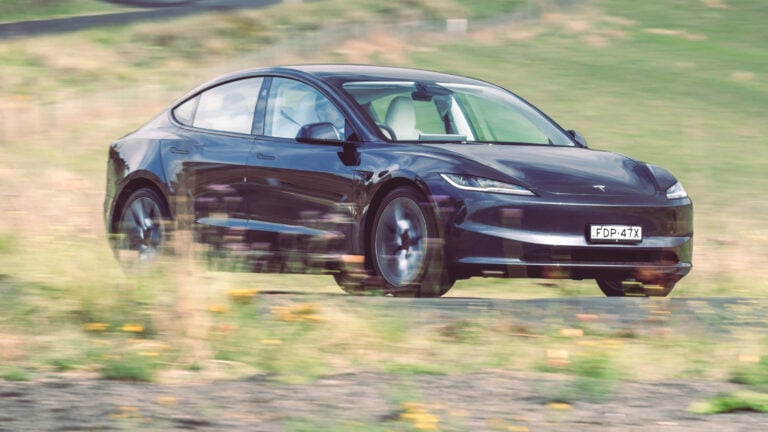 Reviews
Reviews2024 Tesla Model 3 review: Full range detailed
The Tesla Model 3 is a popular electric medium sedan in Australia. Learn about the Model 3 range including price, interior, boot space, safety assists and performance
-
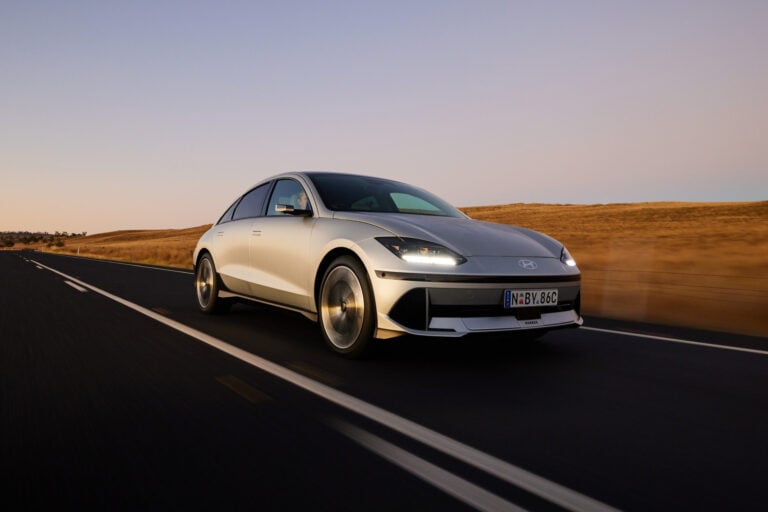 Reviews
Reviews2023 Hyundai IONIQ 6 review: Australian launch
Can Hyundai’s 'electrified streamliner' make the Tesla Model 3 look like yesterday's news? We drive it and find out
-
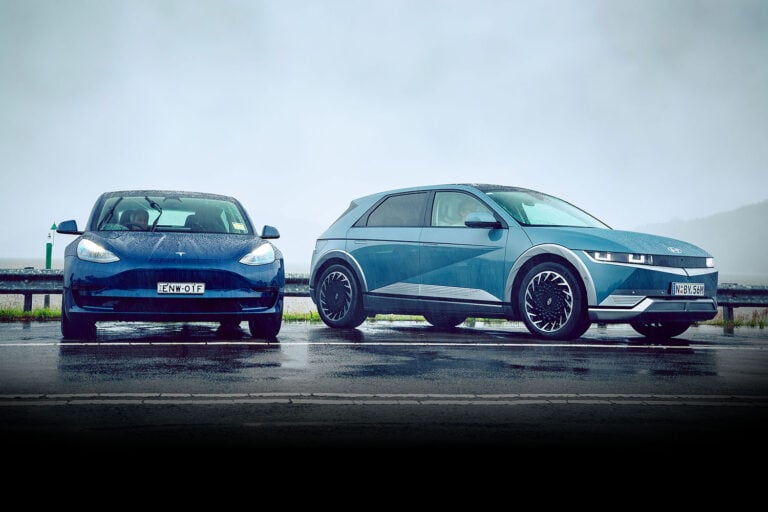 Comparisons
Comparisons2022 Hyundai IONIQ 5 v Tesla Model 3 comparison
Hyundai’s new, 800-volt-batteried hero EV takes on the entry version of the world’s current favourite electric car, the Tesla Model 3.




